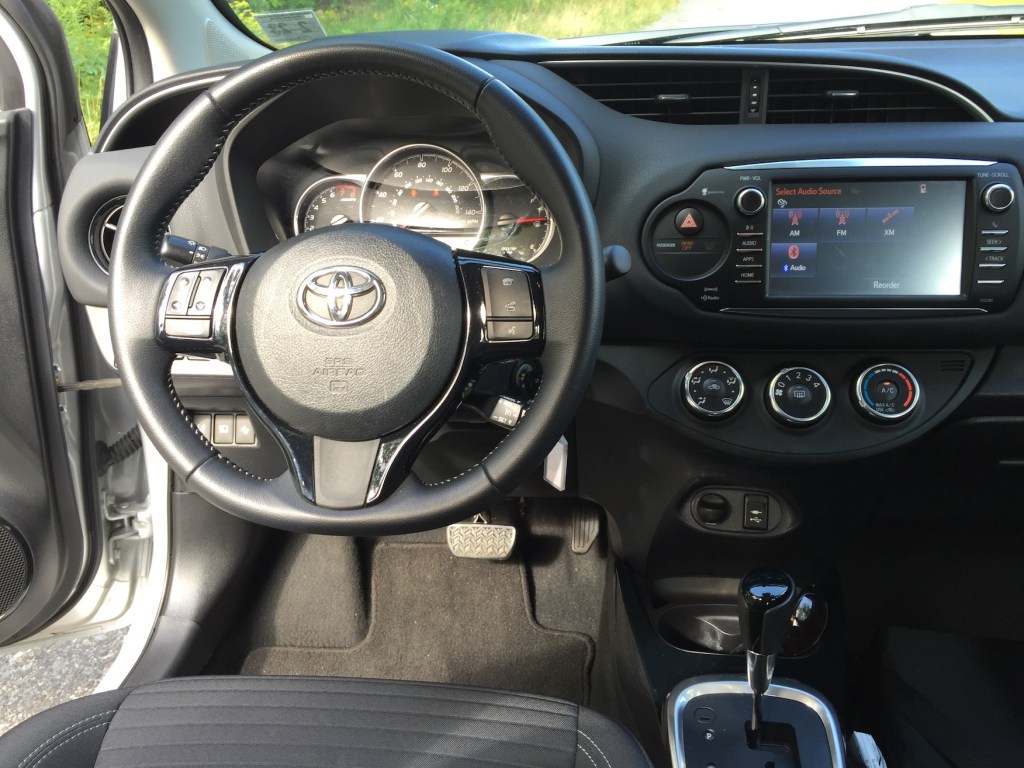The number jumped off the page. In a recent sales report, only 313,000 electric-vehicles were sold year-to-date (through the end of July) in the world’s largest new car market – China.
This burgeoning marketplace bureaucratically pushing electric vehicles, with almost 30 million new vehicles sold each year, barely had a rounding error of EV sales.
What does this foretell to an industry jumping with both feet into EV products? Have the early adopters purchased what they want for an EV? Which manufacturer business models are going to work? Who will survive the proposed EV transition? Who will be subsidized?
These thoughts abound as one of Toyota’s smallest sub-compact cars arrives for a visit, as the conventional sedan/car market shrivels up under the pressure of more user-friendly crossover-style five-doors.
This front-drive Yaris SE – the new liftback model – typifies Toyota’s vast success with small cars. Yet one can only wonder how much of a market is left for small, entry-level cars that use an internal combustion powertrain.
Toyota, too, is facing this question, since its lineup is stocked at the lower end with a plethora of similar offerings. There are no fewer than three Prius models (hybrid and EV); plus two Corolla models now, the latest C-HR small crossover, as well as the Yaris iA sedan and this week’s Yaris Liftback.
This overlap will inevitably lead to the termination of some models as the sales charts weed out what works and what buyers embrace.
Given the current pricing levels of small cars – conventional or otherwise – models like this Yaris still have space in the market. Starting at less than $16,000 (five-speed manual, 35 mpg, five doors) the Yaris undercuts the slightly larger Yaris iA’s price while checking in at a whopping 18 inches shorter.
At 154 inches long, the Yaris competes against the Chevy Spark (143 inches); Honda Fit (161 inches) and the Hyundai Kona (164 inches). Ford’s Fiesta, at 174 inches, seems almost Goliath-like.
Fortunately, efficient packaging leaves users with a comfortable, functional interior that belies the tiny exterior dimensions. Using a chair-like seating position, the Yaris offered ample head and legroom while providing decent comfort for all-day driving stints.
Rear cargo room exceeds all but the larger Kona, which is larger and a much newer design, while rear seat space actually holds adults. Controls are simple knobs and dials that are ergonomically placed.
Our top SE-trimmed model afforded Toyota’s Entune Multi-media audio/entertainment screen with satellite radio. Starting at $19,060, SE trim added a four-speed automatic, sport tuned suspension, Toyota’s Safety-Sense package of pre-collision system, lane departure warning, and other safety gear including nine airbags, as well as trim upgrades inside.
Under the hood resides a 1.5-liter DOHC 16-valve four-cylinder making 106 hp, the same engine used in the Yaris iA. The four-speed automatic proved earnest in all travel below 60 mph, but struggled to hold top gear on the super-slab, resulting in loud, dramatic downshifts to maintain a selected momentum.
Fuel economy returned was 32 mpg, smack in the middle of the EPA projections of 30/35/32 mpg.
Surprisingly, SE trim brought a suspension upgrade that made the Yaris lively and responsive while not quite reaching Supra levels of handling compliance – the return of which Toyota plans for spring 2019.
The Yaris could benefit from a much tighter low-speed turning radius, and it was a surprise to learn that not even one-touch lane change action is available in this platform – perhaps another indication of this model’s meager roots and initial low-price emphasis.
While the realized fuel economy seemed to cry out for a newer multi-speed transmission or even a CVT, there may not be room in the budget to make those changes and hold close to the starting price-point, given the push for more standard safety gear. Buyers in sub-compact cars are generally looking for a higher fuel economy number, despite this car’s solid feel and reliability rating.
Competent in many driving chores, the Yaris had the unfortunate happenstance to visit only weeks after the recent Corolla Hatchback – a newer design with lots more power, greater fuel economy, better handling and greater content for not much more money.
The Yaris hatchback adds virtuous functionality, but the competition from within its own showroom, plus new models like the Kona, might give Toyota product planners conflicts on what to do with the crowd of small cars they are trying to sell.
The marketplace is changing swiftly. Perhaps a battery-based Yaris could tip the scales back.
Send questions/comments to the editors.




